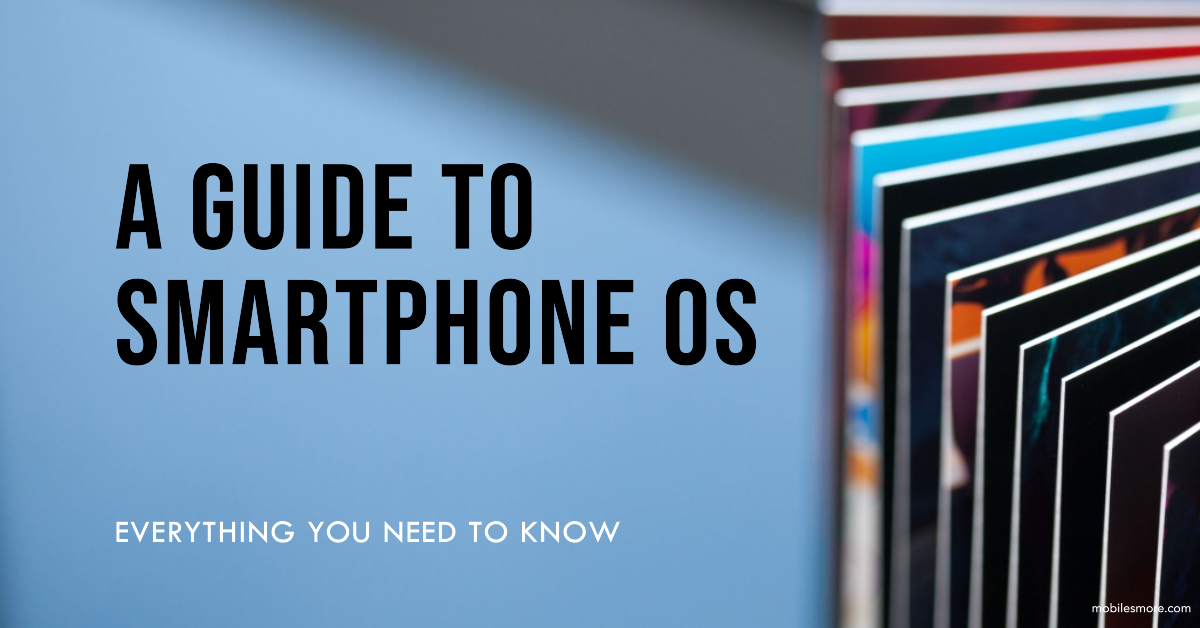Introduction:
In today’s digital age, smartphones have become an integral part of our daily lives. They serve as our communication hub, entertainment center, and productivity tool. Behind the sleek exterior and vibrant displays of these devices lies a crucial element: the smartphone operating system (OS). In this comprehensive guide, we will explore the world of smartphone operating systems, from the giants like iOS and Android to niche players and their impact on your smartphone experience.
Understanding Smartphone Operating Systems:
A smartphone operating system is the software that powers your device, enabling it to run applications, manage hardware components, and provide the user interface. It’s the brain behind the beauty of your smartphone. Let’s dive into the most popular operating systems and what they offer.
iOS: The Apple Ecosystem:
iOS, developed by Apple Inc., is the operating system that powers the iPhone and iPad. It’s known for its simplicity, security, and seamless integration with other Apple devices and services. Here are some key features of iOS:
User-Friendly Interface: iOS is celebrated for its user-friendly interface. The design is clean, intuitive, and user-focused, making it easy for beginners to navigate.
App Store: The Apple App Store offers a vast selection of applications, known for their quality and security. Apple curates the apps to ensure they meet high standards.
Regular Updates: Apple provides consistent software updates, delivering new features, improvements, and security patches. This ensures that even older devices receive support.
Seamless Ecosystem: iOS seamlessly integrates with other Apple devices, including the Mac, Apple Watch, and Apple TV. This interconnected ecosystem enhances the user experience.
Strong Security: Apple’s commitment to user privacy and security is evident in iOS. Features like Face ID and Touch ID provide robust biometric security.
Android: Diversity and Customization:
Android, developed by Google, is the world’s most popular mobile operating system. It’s renowned for its diversity and customization options. Here are some key features of Android:
Versatility: Android powers devices from various manufacturers, providing a wide range of choices in terms of design, features, and pricing.
Customization: Android is highly customizable, allowing users to personalize their devices with widgets, themes, and launchers. You have the freedom to tailor your smartphone to your preferences.
Google Play Store: The Google Play Store offers a vast selection of apps, both free and paid. While it provides more freedom for developers, it’s essential to exercise caution and download apps from trusted sources.
Regular Updates: Android devices receive software updates, but the timing and frequency vary by manufacturer and model. Google’s Pixel phones receive prompt updates, while others may have longer update cycles.
Google Services: Android is deeply integrated with Google services like Gmail, Google Drive, and Google Assistant, making it an excellent choice for those who rely on Google’s ecosystem.
Other Operating Systems:
While iOS and Android dominate the market, several other operating systems cater to niche markets and specific demographics. Let’s explore a few of them:
KaiOS: KaiOS is a lightweight, web-based operating system designed for feature phones and low-end smartphones. It offers essential internet connectivity and app support for users in emerging markets.
Windows Mobile: Although Microsoft discontinued Windows Mobile, some older devices still run this OS. It had a distinctive tile-based interface and integrated well with Windows PCs.
Tizen: Tizen, primarily developed by Samsung, is an open-source operating system used in some Samsung smartwatches and smart TVs. While not widely adopted in smartphones, it showcases Samsung’s commitment to diverse platforms.
Choosing the Right Operating System for You:
The choice between iOS and Android (or another OS) depends on your preferences and needs. Here are some factors to consider when selecting the right operating system for your smartphone:
1. Ecosystem Compatibility: If you own other devices like a Mac, iPad, or Apple Watch, iOS may be the seamless choice. On the other hand, if you use a range of Google services and prefer customization, Android might be more suitable.
2. App Preferences: Consider the applications you need for work, entertainment, and productivity. Check whether the apps you rely on are available and well-supported on your chosen OS.
3. Customization: Assess how much you value customization. If you enjoy personalizing your device with widgets, themes, and launchers, Android offers greater flexibility in this regard.
4. Security and Privacy: Both iOS and Android take security seriously, but they have different approaches. If you prioritize security and value features like Face ID or Touch ID, iOS might be your preference.
5. Long-Term Support: Think about how long you plan to keep your smartphone. Apple’s commitment to updating older devices might make iOS more attractive for those who want to keep their devices for several years.
6. Budget: Consider your budget. While both iOS and Android offer a wide range of devices at various price points, Android provides more budget-friendly options.
Conclusion:
In the world of smartphones, the choice of operating system is a crucial decision. It significantly impacts your user experience, device compatibility, and customization options. While iOS and Android dominate the market, other operating systems cater to unique needs and demographics.
As you embark on your smartphone journey, take your time to research, compare, and evaluate your priorities. Whether you opt for the seamless ecosystem of iOS, the diversity of Android, or a niche operating system, your smartphone will undoubtedly become a vital tool in your daily life, tailored to your preferences and requirements.

